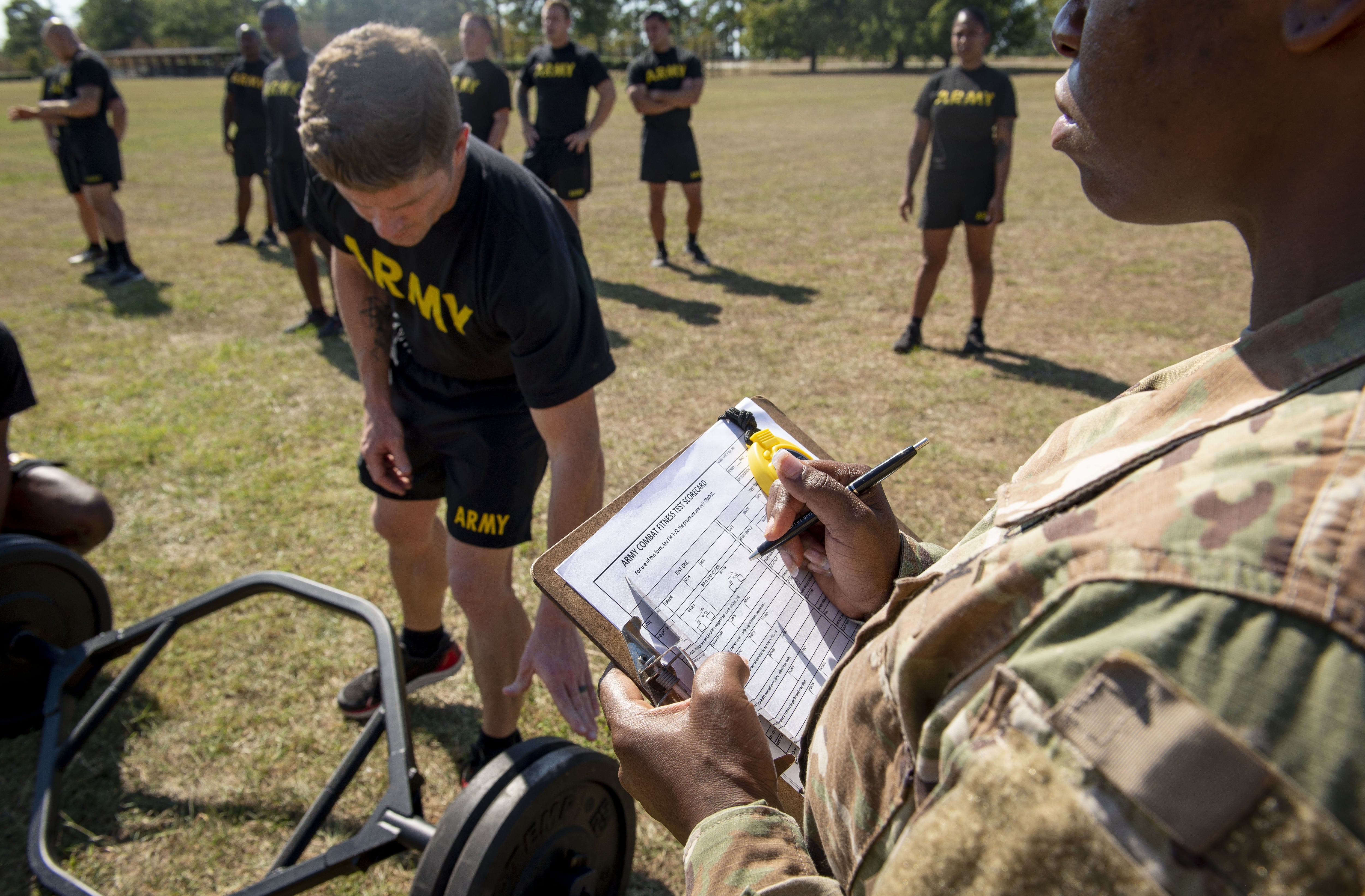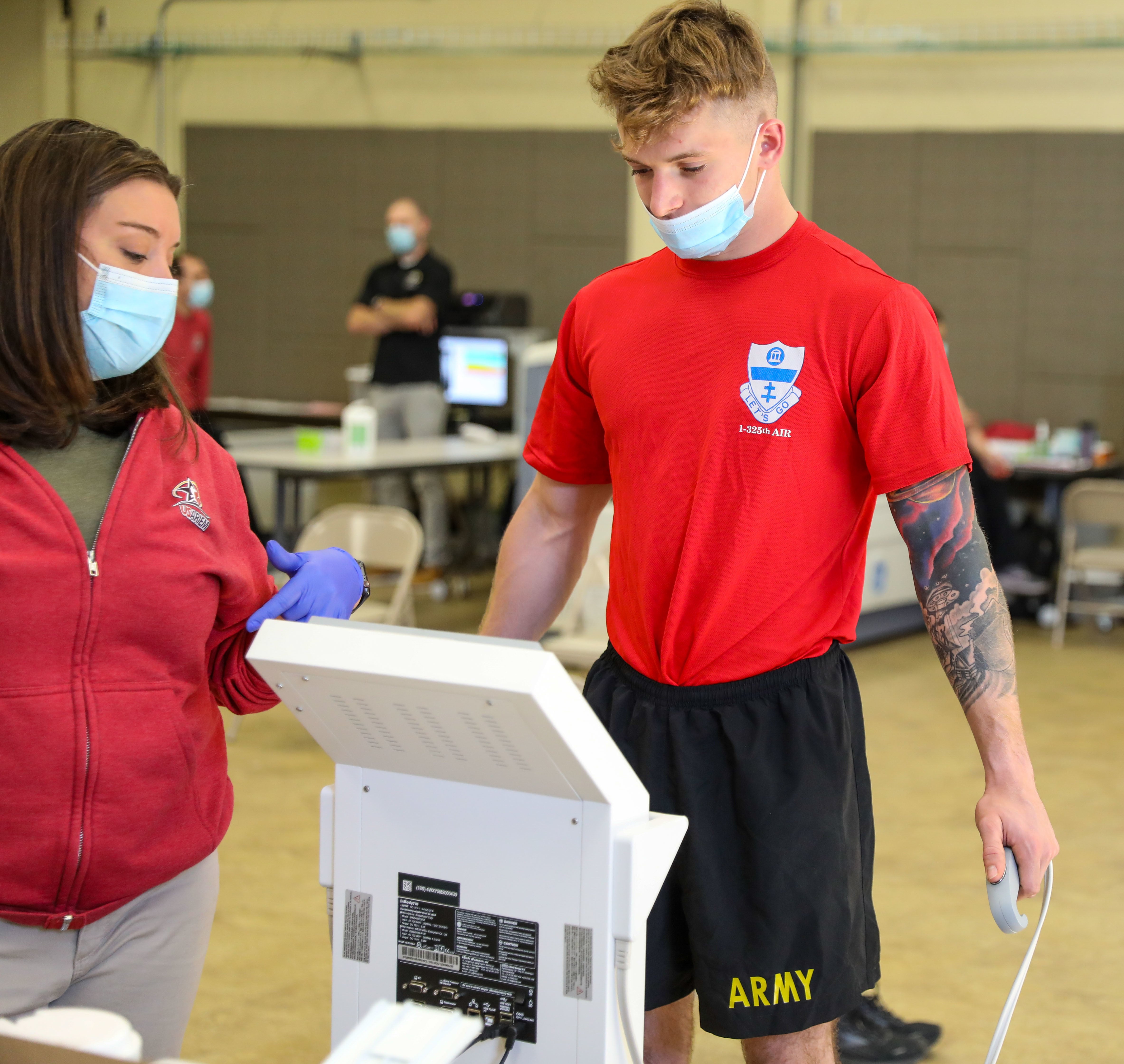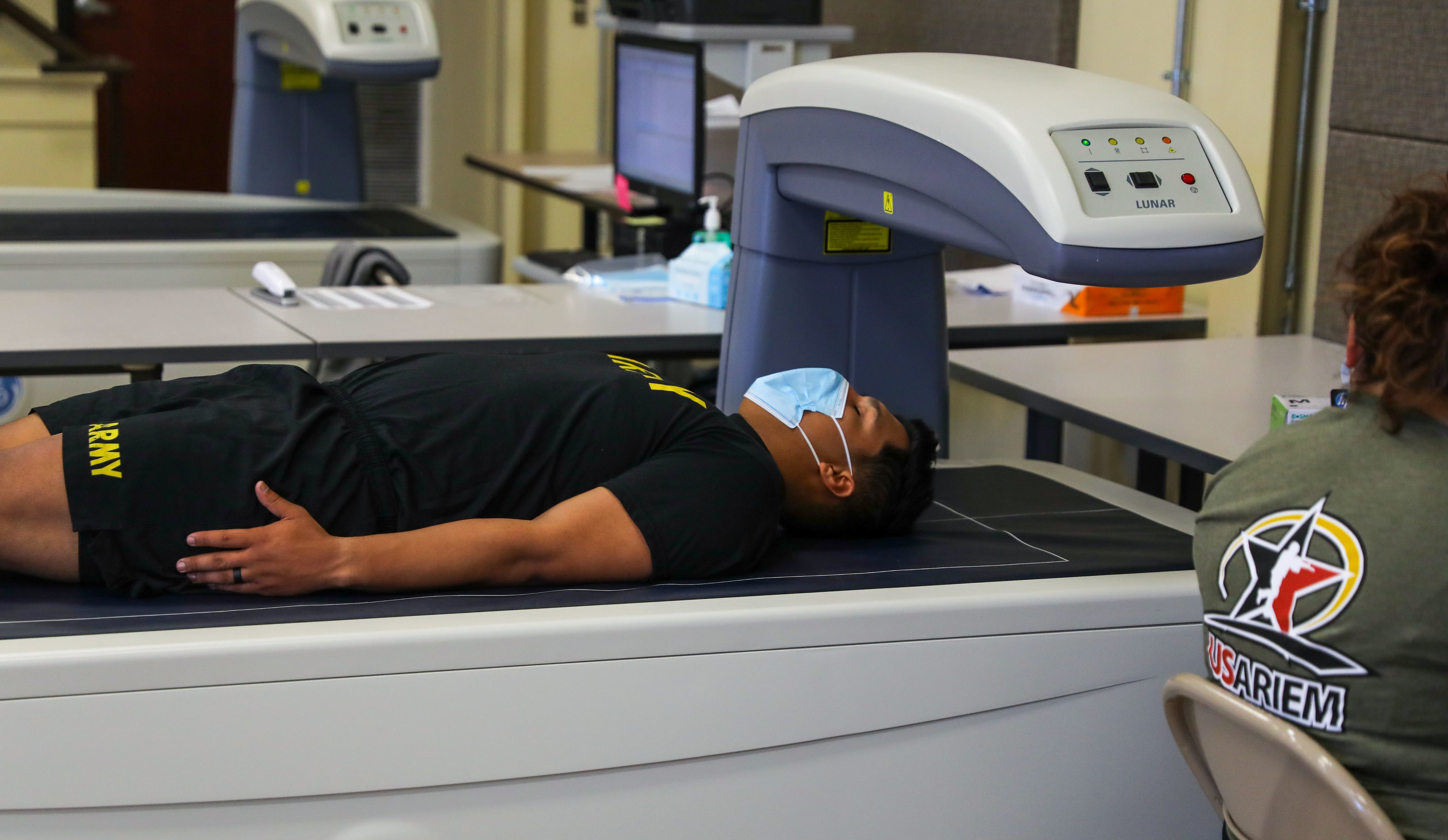Army senior leaders must decide whether to adopt recommended changes to how soldiers are measured for body fat levels.
The recommendations include limiting the tape test to one measurement for both men and women – the waist – and adding weight into the taping equation. And waiving any body fat penalties if the soldier can score a total score of 540 on the Army Combat Fitness Test with at least 80 points each in the separate events.
Neither proposal would make any change to the current body fat standards. There is no change recommended for the body fat percentage that is allowed, said Sgt. Maj. Christopher Stephens, Army G-1 sergeant major.
Should Army leadership approve the proposals, a soldier who fails the tape test has options.
RELATED

The soldier may request supplemental body fat assessment using more advanced measuring techniques that are slightly more accurate.
“You can go get a second opinion,” Sergeant Major of the Army Michael Grinston said.
The current plan would include delivering BOD PODs, an air displacement plethysmograph machine, to major installations and to the Guard and Reserve.

Some locations will also have Body 770 machines that conduct bioelectrical impedance analysis or the most accurate machine, the Dual-energy X-Ray Absorptiometry or DEXA machine.
A decision on the proposals could occur as early as in the next two weeks, Grinston said in a Thursday online town hall.
The study found that while the tape test accuracy could improve, the height-weight standard accurately detects those who require a tape test.
Also, more soldiers who previously passed the current tape test could fail the newly proposed, more accurate tape test.
Researchers with the U.S. Army Research Institute of Environmental Medicine collected data on 2,690 soldiers from across all three components from October 2021 to July 2022. Of that group, 889 were women and 1,801 were men.
Study authors and lead researchers Holly L. McClung, a nutritional physiologist, and Kathryn M. Taylor, a research epidemiologist found that 90 percent of soldiers evaluated first on height and weight standards accurately determine whether the soldier exceeds standards and requires a tape test.
Another finding from the team showed that by reducing the tape measurement to one location and factoring in body weight as part of the taping calculation they received more accurate results in assessing body composition.

Currently, the tape test listed in Army Regulation 600-9 requires testers to measure female soldiers at the neck, waist and hip. Testers measure male soldiers at the neck and waist.
The findings reflect more than simply looking good in uniform. The same research also showed that soldiers who failed the body composition standards had a 50% increased risk of musculoskeletal injuries as compared to those who passed.
Researchers told Army Times that the risk for soldiers who passed the composition standard was 24%. That translated to a 36% risk of injury, or one in three, for overweight soldiers.
The study evaluated multiple body fat composition measuring methods and devices and their accuracy:
- The tape test provides an accuracy range of 2-3% and costs $5 for the tape.
- The 3-D body surface scan had a 1% accuracy range and costs $10-15,000.
- The bioelectrical impedance analysis also has a 2% accuracy range and costs $15-20,000.
- The Dual Energy X-Ray Absorptiometry device has a 0.5% accuracy range and costs $50-100,000.
Source: U.S. Army
The service’s most recent body composition study that predated the new study took place in 2001. The service’s demographics, have changed, showing an increase in the percentage of female and non-white soldiers. Researchers gathered data on those groups in line with statistically accurate methods for representing smaller populations in larger sample sizes.
The Department of Defense updated both its physical fitness and body composition program deadlines in March 2022, Military Times previously reported.
Those guidelines, outlined in defense department instruction 1308.3 removed some restrictions and allows the services more latitude in how they measure body composition.
The instruction notes that female troops may not have more than 36 percent body fat. Male servicemembers cannot carry more than 26 percent body fat.
But no branch may set minimum limits below 26 percent for women and 18 percent for men, according to the defense department instruction.
Todd South has written about crime, courts, government and the military for multiple publications since 2004 and was named a 2014 Pulitzer finalist for a co-written project on witness intimidation. Todd is a Marine veteran of the Iraq War.




